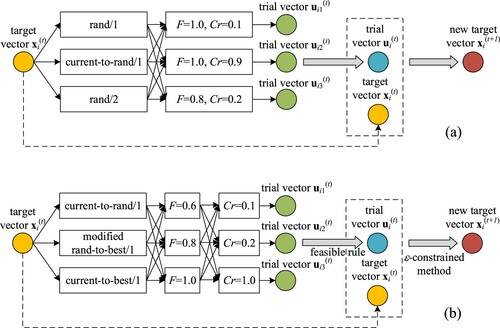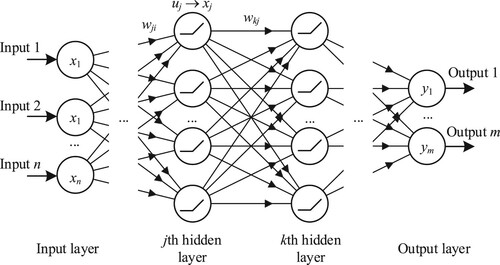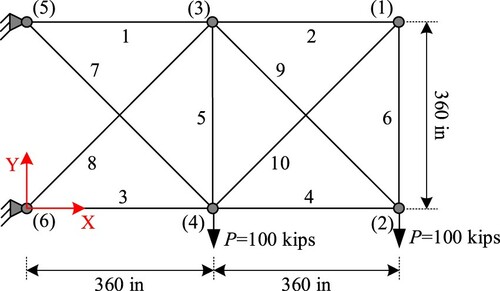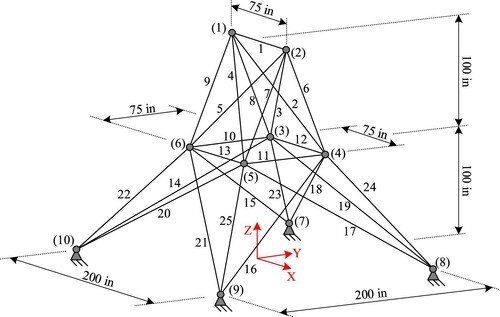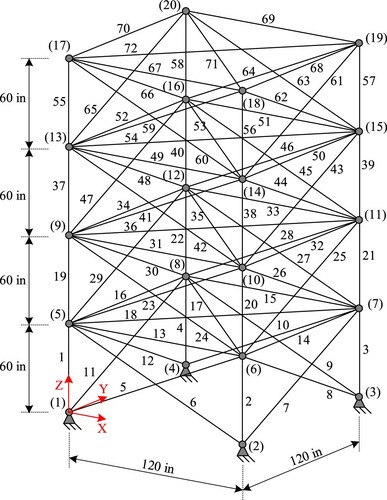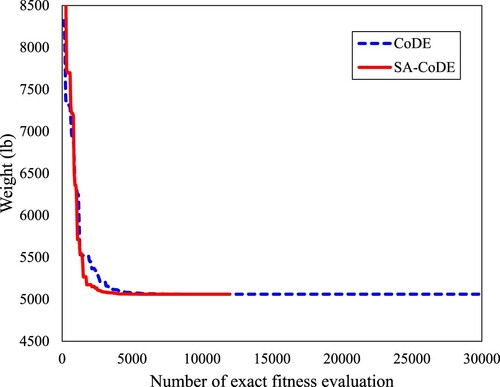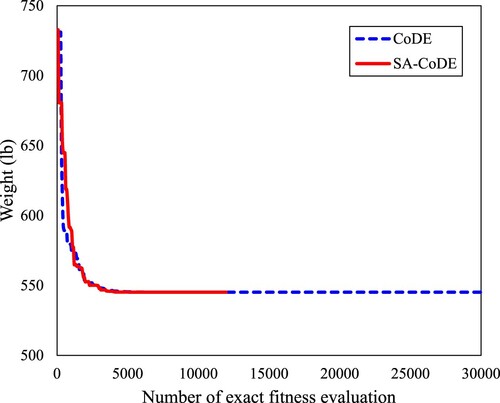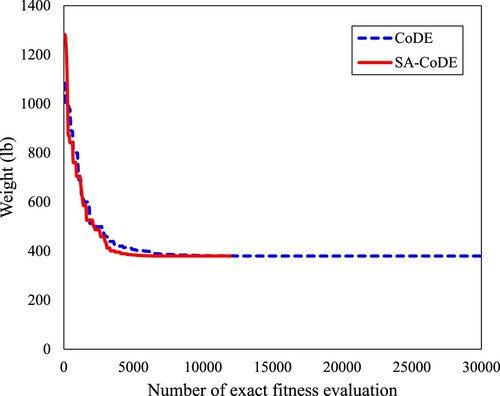Figures & data
Table 1. Allowable stresses for 25-bar truss.
Table 2. Load cases for 25-bar truss.
Table 3. Member group for the 72-bar truss.
Table 4. Load cases for the 72-bar truss.
Table 5. Results for the 10-bar truss.
Table 6. Results for the 25-bar truss.
Table 7. Results for the 72-bar truss.
Table 8. Required number of exact fitness evaluations.
Table 9. Influence of the training data size.

